
Roots
The very air we breathe, with its ever-shifting veil of moisture, holds a quiet conversation with our hair. For those with textured strands, this dialogue is particularly intimate, shaping daily experiences and dictating the very appearance of our coils, curls, and waves. Far from a mere cosmetic concern, the way our hair responds to the atmosphere speaks to its deep biological structure and even its ancestral heritage. To truly master the care of textured hair amidst varying humidity, one must first listen to these whispers of the air, understanding the foundational science that underpins every strand’s existence.

The Hair Strand’s Inner World
Each strand of hair, seemingly simple, holds a complex internal world. At its outermost boundary lies the Cuticle, a protective layer composed of overlapping, scale-like cells, much like shingles on a roof. This cuticle acts as the hair’s first line of defense, guarding the inner Cortex and, in some cases, the innermost Medulla.
The cortex, the thickest layer, is where the magic of hair’s strength, elasticity, and color resides, thanks to bundles of keratin proteins. It is the interaction of these proteins with water molecules that largely dictates how textured hair responds to moisture in the air.
The unique geometry of textured hair, stemming from an oval or asymmetrical follicle shape, causes it to grow with natural bends and spirals. This coiled structure means that the hair’s natural oils, sebum, find it more challenging to travel down the entire length of the strand, leaving textured hair often drier than its straight counterparts. This inherent dryness makes textured hair particularly sensitive to changes in atmospheric moisture, as it is perpetually seeking hydration.
Hair’s delicate structure, particularly its cuticle and keratin proteins, engages in a constant exchange with atmospheric moisture, making textured strands especially responsive to humidity’s ebb and flow.

Porosity’s Influence on Moisture Exchange
A crucial concept in understanding hair’s relationship with humidity is Porosity. This term refers to the hair’s capacity to absorb and hold moisture. It is a direct reflection of the cuticle layer’s state.
- Low Porosity Hair ❉ Here, the cuticle scales lie tightly closed and smooth. This makes it challenging for water and products to penetrate the hair shaft, yet once moisture enters, it tends to stay put. Such hair can feel weighed down by heavy products that sit on the surface.
- High Porosity Hair ❉ Conversely, high porosity hair possesses cuticles that are raised or have gaps. This allows moisture to enter with ease, but also to leave just as quickly. This type is particularly susceptible to frizz in humid conditions because it readily absorbs atmospheric water, causing swelling and disruption of the curl pattern. High porosity can be a natural characteristic or result from damage due to heat, chemical treatments, or environmental factors.
- Medium Porosity Hair ❉ This lies between the two extremes, allowing moisture to enter and stay in balance.
Knowing one’s hair porosity is a guiding light in product selection, as it informs whether products should aim to help moisture enter the strand or seal it within. For textured hair, often tending towards higher porosity, this distinction is particularly significant in the fight against frizz and for maintaining definition in varying climates.

The Unseen Hand of Dew Point
While humidity often receives blame for hair’s unpredictable behavior, a more precise indicator is the Dew Point. This meteorological measurement represents the temperature at which air reaches 100% relative humidity, signifying the absolute amount of water vapor present in the air. A higher dew point indicates more moisture, leading to that muggy, heavy sensation.
The hair’s chemical makeup, particularly its keratin proteins, is highly sensitive to airborne hydrogen, a component of water. This sensitivity is so pronounced that some hygrometers, instruments designed to measure humidity, actually employ human hair for their readings. As humidity increases, hair absorbs more water, and the hydrogen bonds within the keratin proteins reform, leading to changes in hair shape and length. Straight hair may become wavy, and curly hair may become curlier and frizzier.
Consider the impact of dew point on your hair’s daily demeanor:
| Dew Point Range Below 35°F (2°C) |
| Atmospheric Condition Very dry air |
| Hair Tendency Loses moisture, prone to dryness, flyaways, breakage |
| Dew Point Range 40-60°F (4-15°C) |
| Atmospheric Condition Optimal balance |
| Hair Tendency Humectants perform best, good curl definition |
| Dew Point Range Above 60°F (15°C) |
| Atmospheric Condition High moisture, humid |
| Hair Tendency Absorbs water, swells, frizzes, loses definition |
| Dew Point Range Understanding dew point guides product choices for moisture retention or frizz prevention. |
This understanding of dew point, a more specific measure than general humidity percentages, allows for a more tailored approach to hair care, moving beyond reactive styling to a proactive, informed regimen. It speaks to the precise needs of hair, allowing us to anticipate its reactions to the air around us.
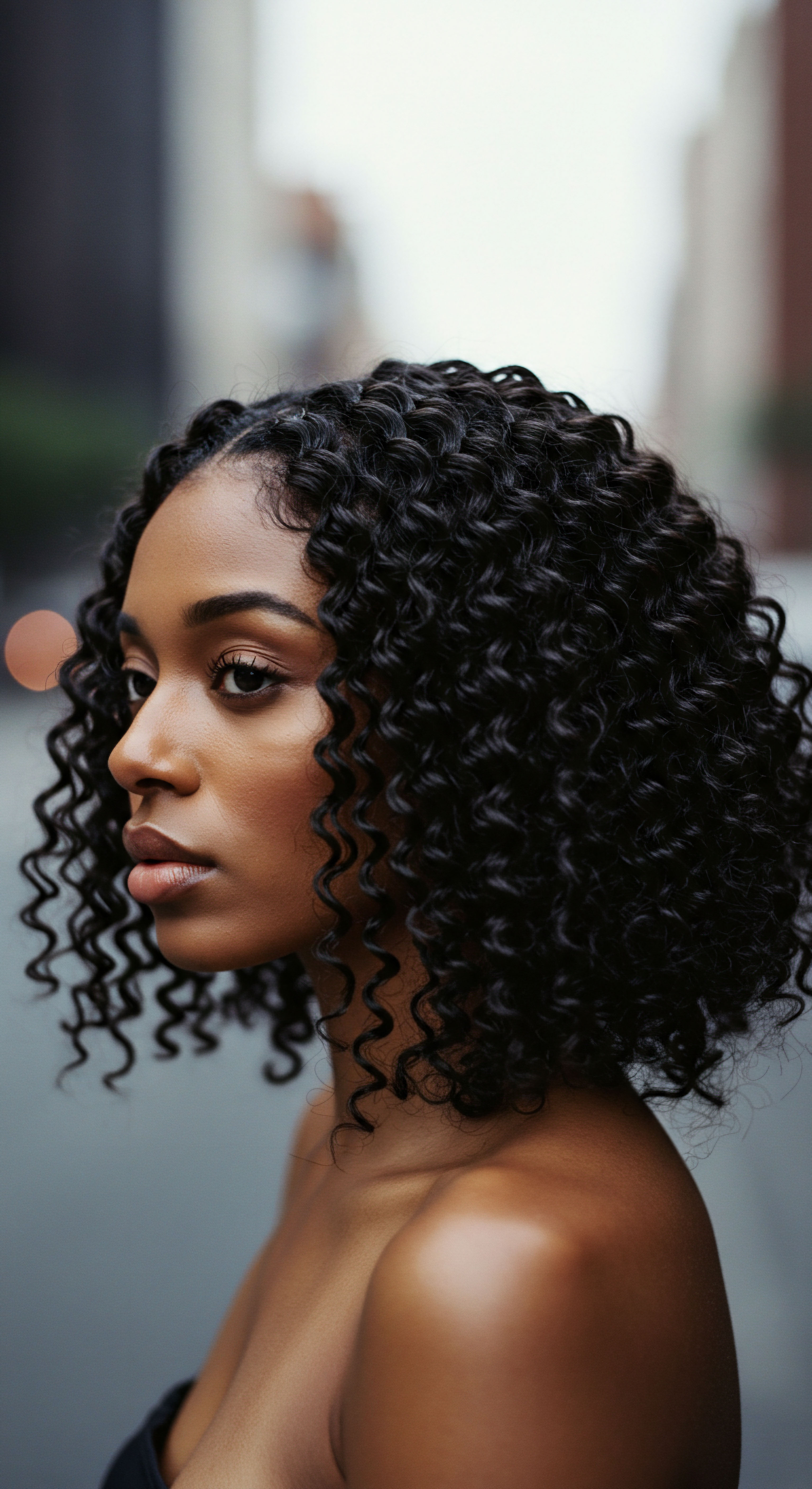
Ritual
As the atmospheric dance unfolds around us, shaping our coils and curves, we seek more than mere scientific explanation; we desire a practical wisdom, a daily rhythm of care that brings peace to our strands. The journey of managing textured hair in fluctuating humidity is not a battle, but a careful, conscious ritual, a series of deliberate choices that honor the hair’s inherent qualities while protecting it from the whims of the weather. This involves a thoughtful selection of products, a mindful application of techniques, and a commitment to ongoing well-being, all tailored to the unique dialogue between hair and air.

Hydration’s Constant Call
The cornerstone of any effective textured hair regimen, particularly in the face of humidity shifts, is consistent Hydration. Textured hair, by its very structure, often struggles to retain moisture, as the natural oils from the scalp have a more challenging path traversing the hair’s twists and turns. When the air is dry, hair can lose its moisture rapidly, becoming brittle and prone to breakage. Conversely, in highly humid conditions, hair can absorb too much water, leading to swelling and frizz, a state often termed Hygral Fatigue.
To counteract these tendencies, the purposeful application of water-based leave-in conditioners is paramount. These products act as a first line of defense, providing a foundational layer of moisture that the hair can draw upon. Following this, the strategic use of Sealing Oils or butters creates a protective barrier around the hair shaft, locking in the hydration and minimizing the unwanted absorption or loss of moisture from the atmosphere.
- Moisturizing Oils ❉ These oils, such as rosemary oil or olive oil, are capable of penetrating the hair shaft, providing internal moisture and nourishment.
- Sealing Oils ❉ These oils, including castor oil, jojoba oil, or argan oil, create a protective layer on the hair’s surface, helping to retain moisture and shield against environmental factors.
The layering of these products, often referred to as the L.O.C. (Liquid, Oil, Cream) or L.C.O. (Liquid, Cream, Oil) method, allows for a methodical approach to moisture management, ensuring strands are well-prepared for whatever the climate may bring.

Styling with the Climate in Mind
Product selection and styling techniques require adjustment based on the prevailing dew point. This adaptability is key to maintaining hair’s definition and reducing frizz.
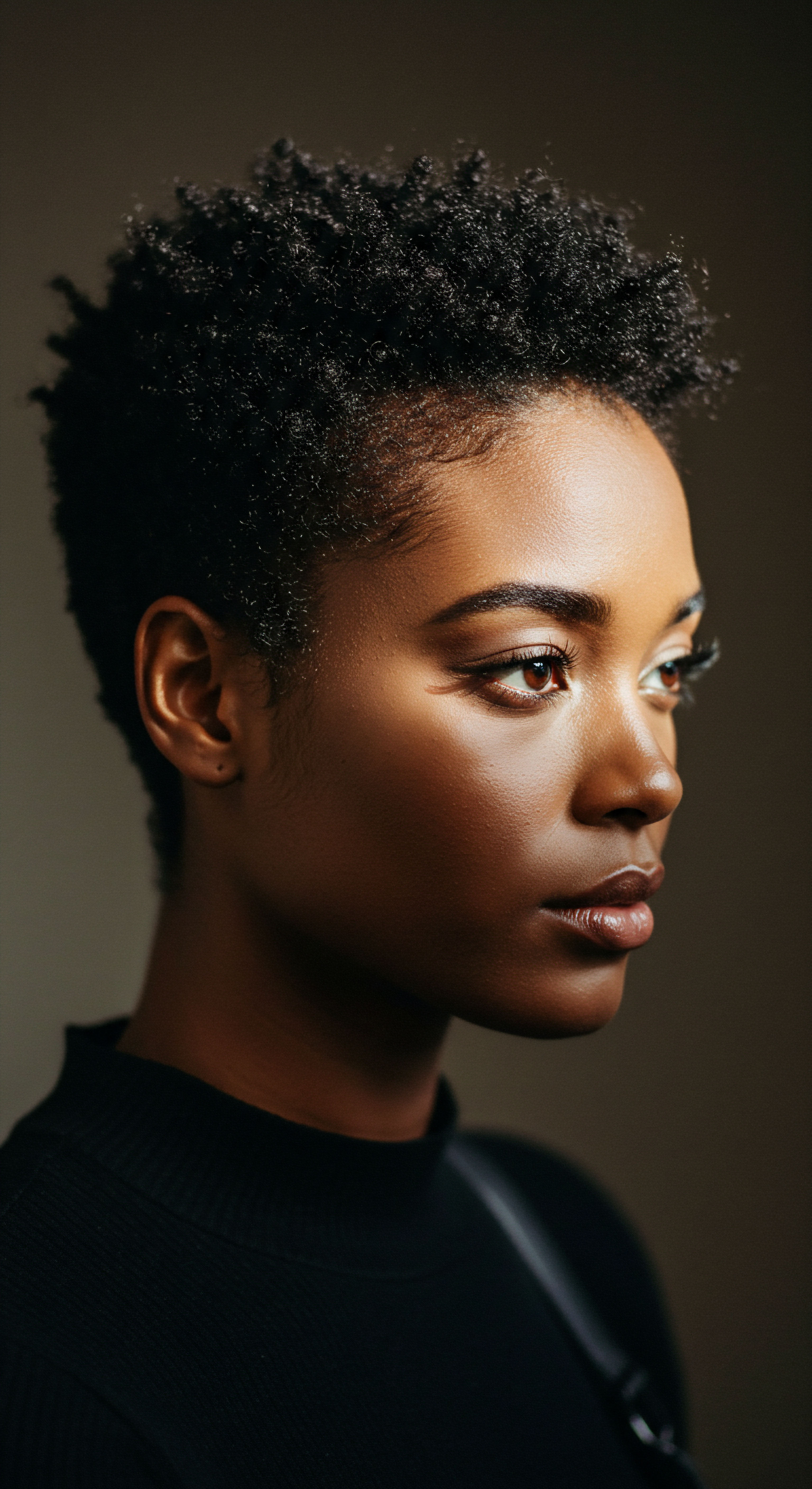
How do Humectants and Anti-Humectants Interact with Fluctuating Humidity?
Humectants are ingredients that attract moisture from the air. Common examples include glycerin, honey, and aloe vera. They are beneficial in moderate humidity, drawing just enough moisture into the hair to keep it supple and defined. However, their efficacy is highly dependent on the surrounding air’s moisture content.
In low dew point conditions (dry air), humectants can actually draw moisture out of the hair and release it into the drier atmosphere, leading to dryness, brittleness, and flyaways. Conversely, in high dew point conditions (humid air), humectants can attract too much water into the hair, causing excessive swelling, frizz, and loss of curl pattern.
This is where Anti-Humectants become invaluable. These ingredients, often silicones, certain oils, or butters like shea butter or coconut oil, create a barrier on the hair’s surface, sealing the cuticle and preventing excessive moisture absorption from the air. They are particularly useful in high humidity environments to maintain definition and prevent frizz.
A balanced approach involves:
- For Moderate Humidity (dew Point 40-60°F / 4-15°C) ❉ Humectant-rich products work well, helping to keep hair hydrated and bouncy.
- For High Humidity (dew Point above 60°F / 15°C) ❉ Prioritize anti-humectant products and stronger hold gels to seal the cuticle and repel excess moisture. Glycerin-free gels can be particularly helpful here.
- For Low Humidity (dew Point below 35°F / 2°C) ❉ Focus on deeply moisturizing leave-ins and creams to prevent moisture loss, potentially minimizing humectants that could draw moisture away from the hair.
Beyond products, protective styles offer a physical shield against the elements. Braids, twists, buns, and updos can significantly reduce the hair’s exposure to the atmosphere, helping to preserve style and minimize frizz. Air drying, when possible, is also a gentler alternative to heat styling, which can further open the cuticle and make hair more susceptible to humidity’s effects.
Thoughtful product selection, guided by an understanding of humectants and anti-humectants, forms the practical core of managing textured hair through humidity’s dance.
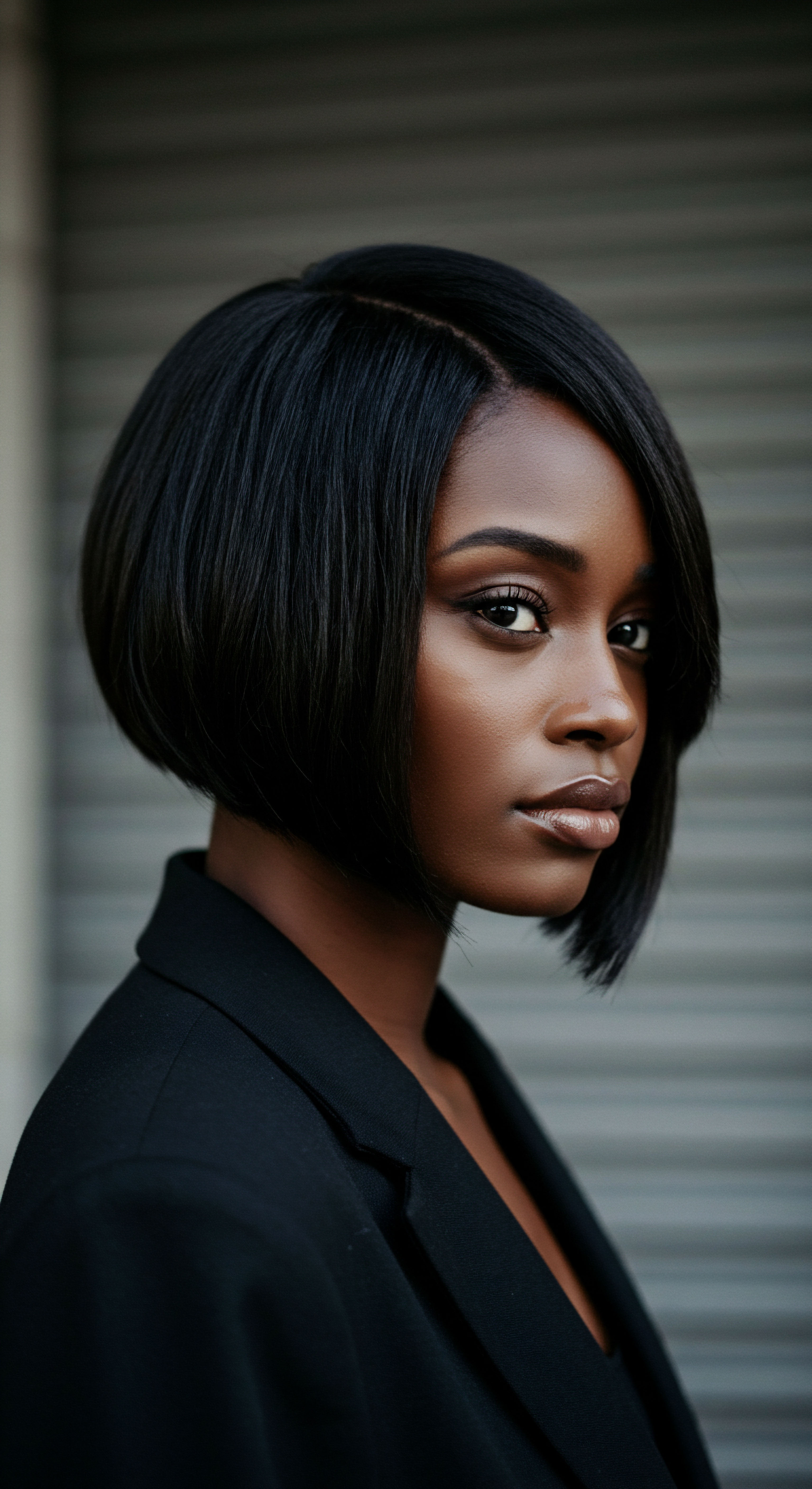
Maintaining Style and Health
The care of textured hair extends beyond wash day. Daily routines and overnight protection play a significant role in sustaining health and style, particularly when atmospheric conditions are volatile.
Refreshing Sprays, often a mixture of water and leave-in conditioner, can revitalize curls between washes, restoring moisture and definition without saturating the hair. These are especially useful on days when humidity causes a slight loss of shape but a full re-wash is not desired. Light oils can also be applied to the ends to maintain moisture and add shine.
Overnight protection is equally important. Sleeping on a Silk or Satin Pillowcase or wrapping hair in a silk or satin bonnet greatly reduces friction, which can lead to frizz and breakage. These materials are far gentler than cotton, which tends to absorb moisture from the hair, contributing to dryness and tangles. This simple nightly ritual helps to preserve the integrity of the hair and prolong the life of styles, offering a peaceful sanctuary for strands as we rest.
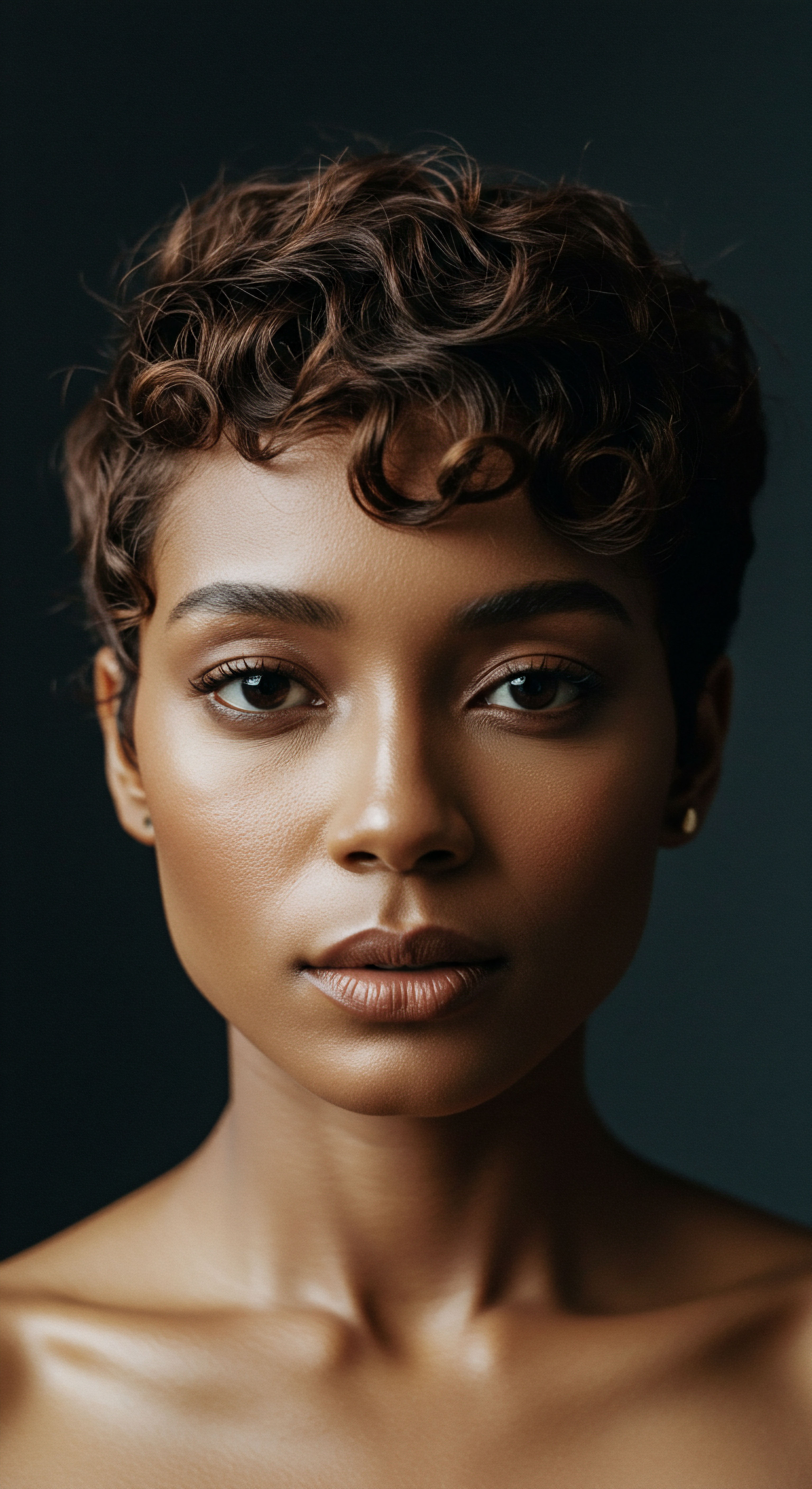
Relay
Beyond the immediate sensations of hair responding to the air, there exists a deeper interplay, a historical resonance and a scientific complexity that elevates hair care from routine to a dialogue with heritage and biological truth. Understanding the subtle shifts in hair’s behavior under fluctuating humidity demands not only a grasp of molecular science but also an appreciation for the long-standing practices born from necessity and wisdom. This final layer of inquiry asks us to consider the hair not just as a physical entity, but as a living record, continually interacting with its environment, reflecting both its past and its present.

The Molecular Dialogue of Hair and Water
The interaction between hair and atmospheric water is a fascinating molecular dialogue. Hair’s primary component, Keratin Protein, contains specific sites that readily form weak hydrogen bonds with water molecules. When humidity rises, more water molecules are available to form these bonds, causing the hair shaft to swell. This swelling, particularly pronounced in textured hair due to its already open cuticle structure (especially high porosity types), disrupts the hair’s natural curl pattern and leads to the familiar phenomenon of frizz.
Conversely, in very dry air, water molecules depart the hair, causing it to shrink and potentially become brittle. The constant swelling and shrinking of the hair shaft due to repeated moisture absorption and release can lead to a condition known as Hygral Fatigue. This weakening of the hair’s internal protein structure can result in a mushy, limp feel when wet, a loss of elasticity, increased breakage, and even a gummy texture. While hair does not “acclimatize” to humidity in a way that permanently changes its fundamental structure, continuous exposure to extreme fluctuations can indeed cause lasting damage to the cuticle and cortex.
A study published in the Journal of Cosmetic Science (Robbins, 2012) highlighted that the mechanical properties of hair, such as its tensile strength and elasticity, are significantly influenced by relative humidity. The research showed that hair absorbs water and swells, with the degree of swelling varying across different hair types and states of damage. For instance, chemically treated or highly porous hair exhibits greater swelling and, subsequently, greater changes in mechanical properties under varying humidity.
This underscores the need for specific care tailored to the hair’s current state and porosity when managing environmental moisture . This particular research emphasizes that while all hair reacts, the degree of reaction and potential for damage is amplified in compromised strands, underscoring the necessity of preventative care.
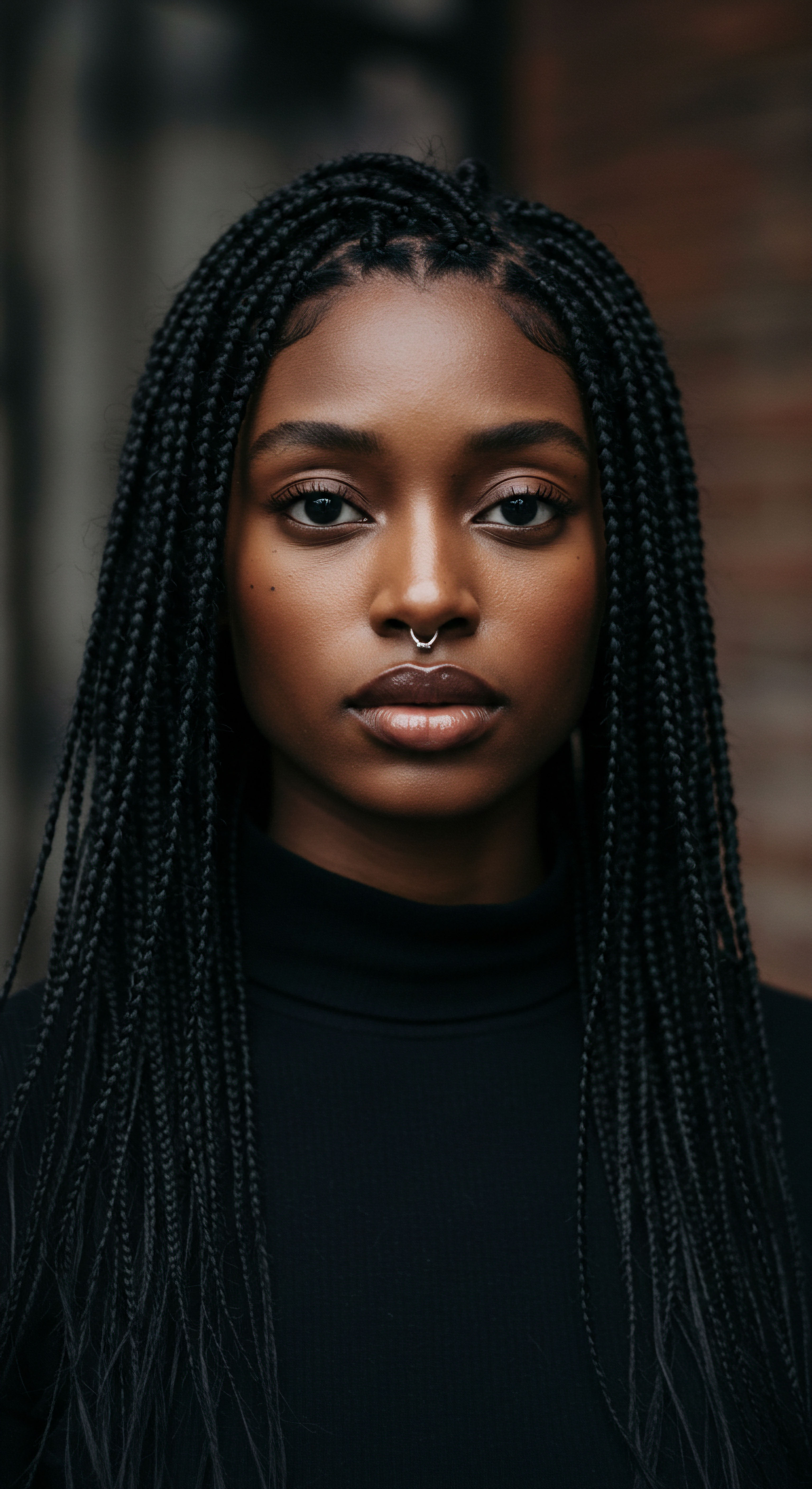
A Historical Whisper ❉ Bonnets and Protection
The practice of protecting textured hair, especially during rest, is not a modern invention but a deeply rooted cultural practice. The use of Bonnets and head wraps holds a rich history within Black communities, serving both practical and symbolic purposes. Dating back to ancient Egypt and evolving through centuries, these head coverings became essential for preserving intricate styles and shielding hair from environmental factors, including dust, dirt, and fluctuating humidity.
During the era of enslavement, head coverings, while sometimes enforced as a marker of status, were also ingeniously adapted by Black women as a means of hair protection, resourcefulness, and a quiet preservation of cultural identity. With limited access to traditional hair care resources, simple fabrics became vital tools for maintaining hair health and extending the life of styles between washes. This practice, passed down through generations, underscores a deep understanding of hair’s vulnerability and the importance of consistent protection, particularly against the drying effects of cotton pillowcases or the disruptive influence of atmospheric moisture overnight. The bonnet, therefore, is not merely a sleep accessory; it is a cultural artifact, a testament to resilience, and a symbol of ongoing care that predates modern scientific understanding of hair’s molecular behavior.

Ingredient Intelligence and Regimen Adaptation
Beyond general categories, a deeper understanding of specific ingredients and their interaction with hair under different humidity conditions is crucial. Some humectants, like Glycerin, are highly effective at attracting moisture, but their performance can be unpredictable. In very high humidity, glycerin can draw in so much water that hair becomes limp and frizzy, while in very low humidity, it can pull moisture from the hair itself. This prompts a shift towards Glycerin-Free Products in extreme conditions for many textured hair enthusiasts.
Consider the varying needs of hair:
| Humidity Condition High Humidity (Dew Point > 60°F) |
| Product Characteristics Anti-humectants, strong-hold gels, silicones, heavier emollients. |
| Reasoning To seal the cuticle, prevent swelling, and maintain curl definition. |
| Humidity Condition Low Humidity (Dew Point < 35°F) |
| Product Characteristics Rich leave-in conditioners, moisturizing creams, lighter oils. |
| Reasoning To provide and lock in moisture, counteracting dry air's dehydrating effect. |
| Humidity Condition Moderate Humidity (Dew Point 40-60°F) |
| Product Characteristics Balanced products, humectants, medium-hold stylers. |
| Reasoning Allows humectants to function optimally, drawing appropriate moisture. |
| Humidity Condition A dynamic product regimen responds to the specific moisture demands of the atmosphere. |
The concept of a “seasonal hair care routine” is a practical manifestation of this advanced understanding. It acknowledges that hair’s needs are not static but shift with the climate, requiring a proactive adjustment of products and practices rather than a reactive attempt to control frizz or dryness after it has already occurred. This mindful adaptation, informed by both scientific principles and a deep listening to the hair’s responses, forms the core of truly sophisticated textured hair care.
A truly responsive hair regimen recognizes the hair’s molecular dance with water and adapts product choices and protective measures to climate’s precise cues.
Furthermore, the health of the scalp plays a direct role in how hair responds to humidity. Increased humidity can lead to greater sweat and oil production on the scalp, potentially worsening existing conditions or creating new challenges. Maintaining a clean, balanced scalp environment with appropriate cleansing and occasional targeted treatments can help regulate sebum production and prevent issues that might compromise hair health and its ability to manage external moisture.

Reflection
The conversation between textured hair and the ever-present atmosphere is one of delicate balance, a constant negotiation between absorption and release. To truly care for these strands is to honor their unique architecture, their historical resilience, and their dynamic response to the world. It calls for a patient hand, a curious mind, and a willingness to adjust, to learn, and to appreciate the profound beauty that lies in every coil, curl, and wave, regardless of the weather’s whim. This understanding, both scientific and soulful, allows us to move beyond simply taming frizz, to a place of genuine connection and celebration of our hair’s inherent vitality.

References
- 1. Robbins, C. R. (2012). Chemical and Physical Behavior of Human Hair. Springer Science & Business Media.
- 2. Feughelman, M. (1997). Mechanical Properties of Hair. In Hair Science (pp. 37-67). CRC Press.
- 3. Wolfram, L. J. (2003). Human Hair ❉ A Unique Biological Fiber. In Hair Cosmetics ❉ An Overview (pp. 1-24). CRC Press.
- 4. McMullen, R. L. (2017). Chemistry and Manufacture of Cosmetics ❉ Cosmetic Materials. Allured Publishing Corporation.
- 5. Bolduc, C. & Shapiro, J. (2019). Hair Care ❉ An Illustrated Dermatologic Handbook. Springer.
- 6. Franbourg, A. Hallegot, P. Baltenneck, F. Freyssinet, J. M. & Bouillon, C. (2022). Current Research on Hair and Scalp Disorders. Springer.
- 7. Laderman, C. (2018). Hair ❉ A Cultural History. Bloomsbury Publishing.
- 8. Dawber, R. P. R. & Van Neste, D. (2004). Hair and Scalp Diseases ❉ Clinical and Practical Aspects. Informa Healthcare.
- 9. Kumar, A. & Sharma, V. (2018). Hair Cosmetics ❉ A Scientific and Clinical Approach. Jaypee Brothers Medical Publishers.
- 10. Wortzman, M. S. & Brown, A. C. (2012). Hair Science ❉ The Art and Science of Hair Care. Allured Publishing Corporation.